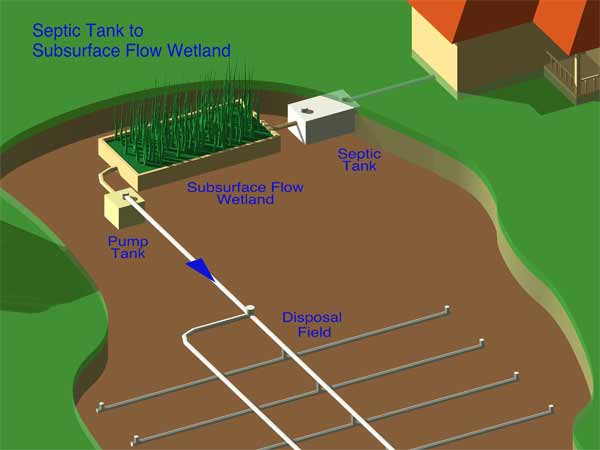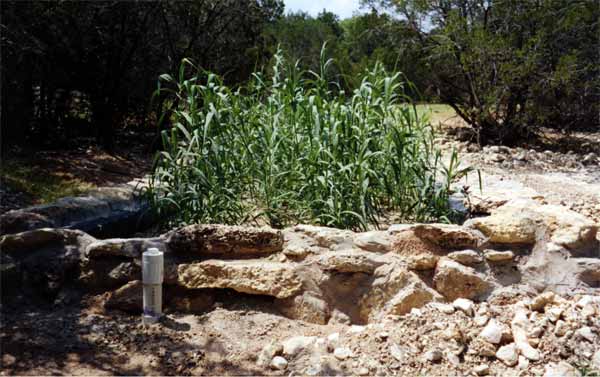Subsurface flow wetlands can reliably produce low levels of BOD and TSS, as well as provide for reduction of total nitrogen to varying levels, depending on sizing and design of the system. Wetlands require significantly less maintenance than other commonly used treatment options where secondary treatment is needed. A properly designed and constructed system of this type is capable of producing secondary quality effluent prior to subsurface dispersal. Average BOD5 and TSS levels of 20-25 mg/L can be achieved. Total nitrogen reduction of 25-30% can typically be achieved by the subsurface flow wetland, though nitrification is limited due to anoxic zones in the wetland.
CES designed and provided construction phase services for a subsurface wetland treatment system to serve a single family residence in the hill country to the west of Austin. Additional pathogen reduction was provided to the system by the use of sand-lined low-pressure dosed trenches in the subsurface dispersal field. Following construction, the system was monitored for two years to demonstrate and verify performance. A conceptual layout of this type of system is provided below.
The wetland with reeds fully established is shown here. The cleanout is located adjacent to a pump tank from which treated effluent from the wetland is dosed to a subsurface LPD field with sand-lined trenches.
The completed subsurface dispersal field is shown here with vegetative cover being established. Barely visible on the right is a capped white PVC monitoring port for sampling effluent from the field. The green valve cover is located over a gate valve used to adjust dosing pressure in the field.



